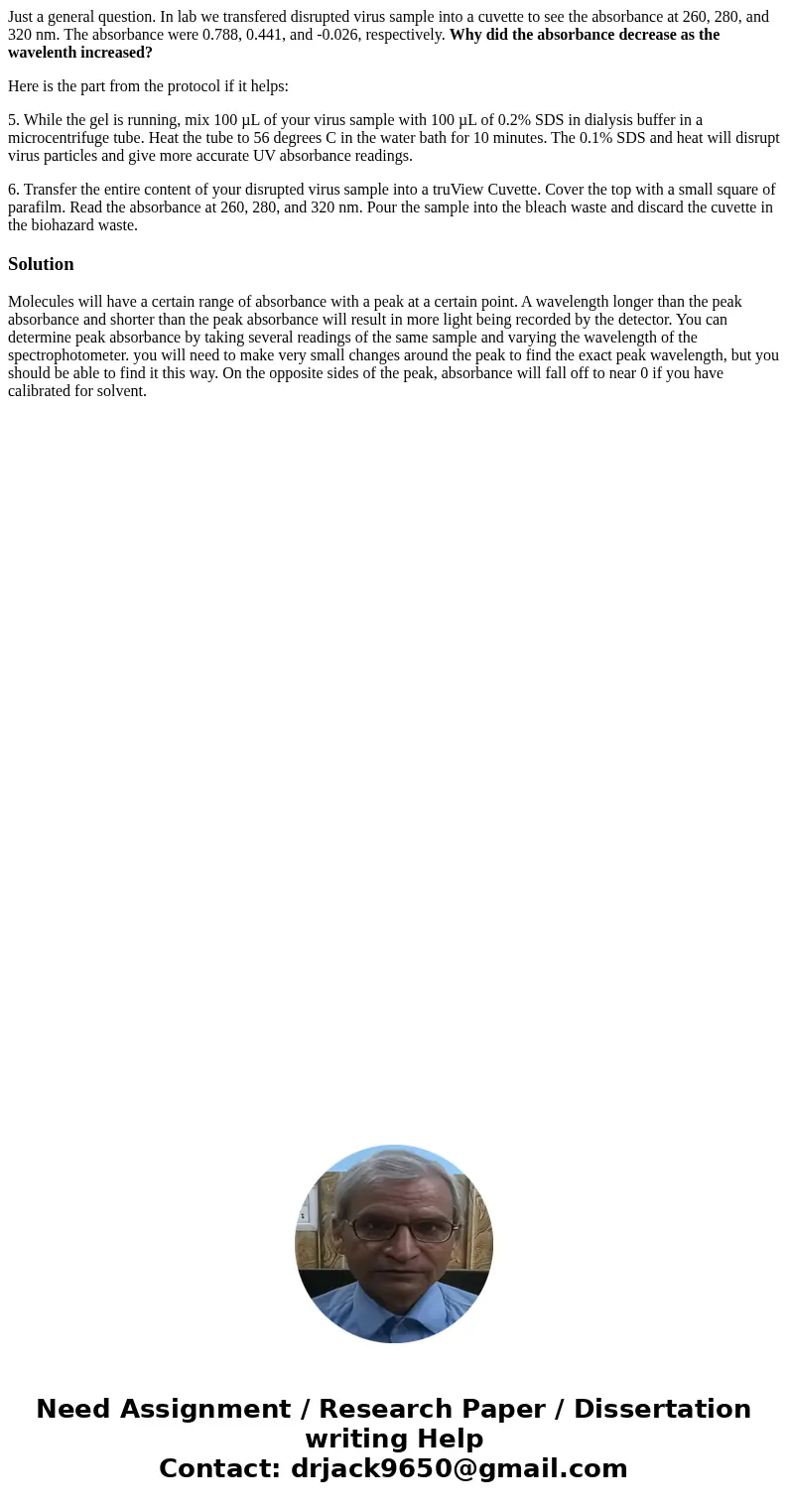Just a general question In lab we transfered disrupted virus
Just a general question. In lab we transfered disrupted virus sample into a cuvette to see the absorbance at 260, 280, and 320 nm. The absorbance were 0.788, 0.441, and -0.026, respectively. Why did the absorbance decrease as the wavelenth increased?
Here is the part from the protocol if it helps:
5. While the gel is running, mix 100 µL of your virus sample with 100 µL of 0.2% SDS in dialysis buffer in a microcentrifuge tube. Heat the tube to 56 degrees C in the water bath for 10 minutes. The 0.1% SDS and heat will disrupt virus particles and give more accurate UV absorbance readings.
6. Transfer the entire content of your disrupted virus sample into a truView Cuvette. Cover the top with a small square of parafilm. Read the absorbance at 260, 280, and 320 nm. Pour the sample into the bleach waste and discard the cuvette in the biohazard waste.
Solution
Molecules will have a certain range of absorbance with a peak at a certain point. A wavelength longer than the peak absorbance and shorter than the peak absorbance will result in more light being recorded by the detector. You can determine peak absorbance by taking several readings of the same sample and varying the wavelength of the spectrophotometer. you will need to make very small changes around the peak to find the exact peak wavelength, but you should be able to find it this way. On the opposite sides of the peak, absorbance will fall off to near 0 if you have calibrated for solvent.

 Homework Sourse
Homework Sourse